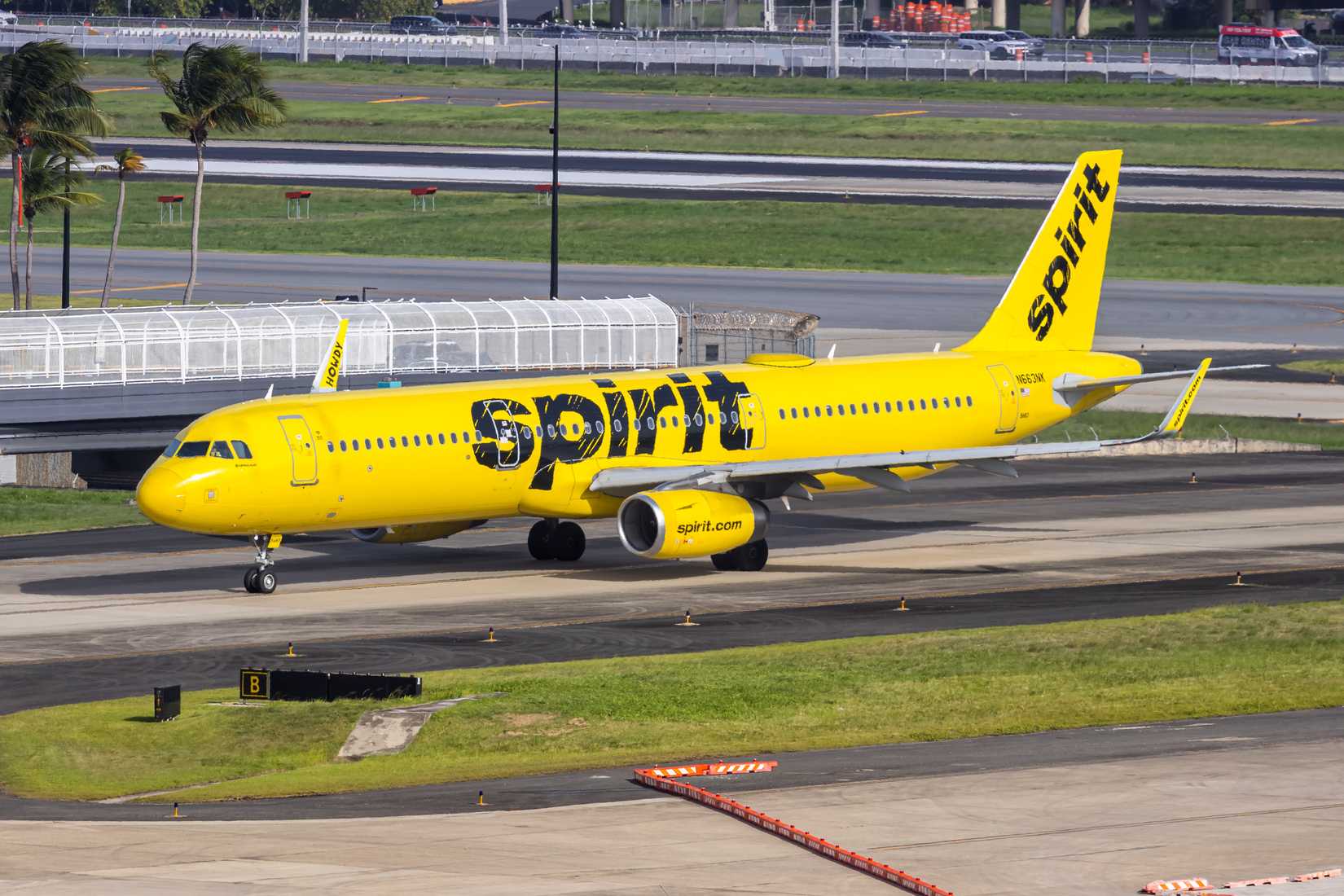Spirit Aviation Holdings, the parent company of Spirit Airlines, announced on August 29 that it has entered Chapter 11 Bankruptcy proceedings in order to restructure its business while maintaining day-to-day operations online. Despite already being bailed out last year, the airline remains unstable. Although many equate bankruptcy with shutting down, United States law provides avenues for companies like Spirit to continue operating while they resolve the issue.
In an open letter, the company emphasizes that flights will continue as scheduled. The existing tickets, travel credits, and loyalty points will remain valid. The Free Spirit loyalty program, Saver$ Club benefits, and credit-card perks will be unaffected. Spirit wrote in an open letter to travelers that its employees are committed to maintaining safe, reliable service and there is already a dedicated website for further details about the restructuring.
Spirit’s Downward Spiral In 2025
The recent announcement marks the second time Spirit has sought bankruptcy protection in the past year. The airline said that a court-supervised process was considered the best way to implement the financial and operational changes needed for long-term stability. The carrier is negotiating with aircraft lessors, investors, and other stakeholders as it expects the Chapter 11 filing to provide the time and tools required to course correct.
Spirit Airlines previously filed for Chapter 11 bankruptcy protection in November 2024, following running financial losses of over $1.2 billion for the year. This bankruptcy filing came after the collapse of a proposed merger with JetBlue. That was blocked by a federal judge on antitrust grounds earlier in 2024. The failure of this deal blocked Spirit from an opportunity for financial stability at a time when the airline was struggling.
The airline’s financial troubles have been compounded by several factors. Ongoing engine problems led to a Pratt & Whitney recall that grounded many of Spirit’s Airbus jets. At the same time that it lost aircraft, Spirit experienced a decline in revenue per available seat mile and an increase in operating costs, which included higher expenses for aircraft rent, wages, and employee benefits.
Despite emerging from bankruptcy in March 2025 with a debt restructuring plan and an infusion of $350 million in new funding, Spirit’s financial challenges persisted. Soft demand in the domestic leisure travel market, combined with continued high operating costs, made recovery difficult. Thus, Spirit succumbed to the doubts around its ability to continue with its current model. The airline gave an official notice to the Securities and Exchange Commission (SEC) and filed for a second Chapter 11 bankruptcy on August 29, 2025.
Shot Down For The Second Time
Spirit has released a plan to reshape its route network by concentrating service in core markets and reducing its presence in areas with the weakest returns. The airline also intends to shrink its fleet so that aircraft capacity aligns with profitable demand. The measure should lower debt from lease obligations and yield operating savings to protect the bottom line.
Dave Davis, President and Chief Executive Officer, was quoted in PR Newswire giving the following statement in explanation of the airline’s decision:
“Since emerging from our previous restructuring, which was targeted exclusively on reducing Spirit’s funded debt and raising equity capital, it has become clear that there is much more work to be done and many more tools are available to best position Spirit for the future.
“After thoroughly evaluating our options and considering recent events and the market pressures facing our industry, our Board of Directors decided that a court-supervised process is the best path forward to make the changes needed to ensure our long-term success. We have evaluated every corner of our business and are proceeding with a comprehensive approach in which we will be far more strategic about our fleet, markets and opportunities in order to best serve our Guests, Team Members and other stakeholders.”
The Spirit restructuring is expected to follow a few major guiding points as outlined below:
|
Network Redesign |
Concentrate flying in core markets, add frequencies where profitable, and scale back service in under-performing cities. |
|
Fleet Optimization |
Reduce aircraft numbers to better match demand, thereby lowering debt, lease liabilities, and ongoing operating costs |
|
Cost Structure Improvements |
Extend Spirit’s low-cost model by seeking additional efficiencies across the organization. |
|
Product Segmentation |
Continue offering three service tiers to align with evolving customer preferences while maintaining a low-fare focus. |
Further cost-structure changes are anticipated as the carrier seeks to streamline its Low-Cost Carrier (LLC) model. In product terms, Spirit will continue to offer three pricing tiers: Spirit First, Premium Economy, and Value. That will still allow the budget airline to accommodate a range of consumer preferences without abandoning its commitment to low prices.
Business As Usual For Flyers
Throughout the restructuring, Spirit has said that normal operations will continue. Customers may book flights and redeem tickets, credits, or loyalty points. Employees will receive wages and benefits. Suppliers will be paid for goods and services delivered after the filing date. On the investor side, the company anticipates an imminent delisting from the NYSE American exchange, after which its shares will trade with current shareholders at no residual value.
Under Chapter 11, a debtor, Spirit, can continue to run its business as a “debtor in possession,” shielded by an automatic stay that halts most creditor actions while the bankruptcy court supervises the case. The debtor is granted an initial exclusive window of 120 days to file a reorganization or liquidation plan. There is a 180-day period to secure creditor support, but that period is often extended by the court, according to Sheppard Mullin.
Spirit’s plan must classify claims, lay out revised repayment terms, and satisfy a myriad of court terms and criteria. Once the restructuring plan passes court-dictated tests, it both discharges most pre-existing debts and swaps new contract obligations for the old ones. If the debtor fails, Spirit Airlines, the court may convert the matter to a Chapter 7 liquidation, which would allow creditors to propose their own plan, or the court can simply dismiss the case.
How Does Chapter 11 Work?
For airlines, Section 1110 of the Bankruptcy Code imposes a sixty-day deadline. Within two months of filing, the carrier must cure all pre-petition defaults on aircraft leases or financing agreements and obtain court approval to keep using the equipment. Sheppard Mullin says that otherwise, lessors and other owed parties can gain the right to repossess immediately. The rule forces airlines to decide quickly which aircraft to shed and pressures lessors to negotiate payment deferrals or rent reductions if they prefer cash flow over repossession.
Trustees are appointed only in exceptional circumstances under Chapter 11. The debtor normally remains in control of decisions, and once the initial period lapses, any creditor or other interested party must file a competing plan. Although both systems rely on class-by-class creditor voting and court confirmation. The goal of filing for Chapter 11 bankruptcy protection is to restructure the debtor’s finances, shed unwanted assets, and emerge with a stronger balance sheet and become profitable.
The Bailout Logs: Insolvent US Airlines
Formal bankruptcies were rare in the highly regulated airline industry that existed prior to deregulation in 1978. The Civil Aeronautics Board preferred to resolve the issues of failing carriers by facilitating mergers that transferred assets and routes to more robust airlines. A good example was the case of Northwest’s acquisition by Delta. More than a hundred airline bankruptcy filings have occurred since 1978. Subsequent recessions, fierce rivalry, rising prices, the Gulf War, and the September 11 attacks have all put immense pressure on US airlines.
Below is a brief list of airlines that have filed for insolvency since the 2008 bubble crisis, according to Airlines for America data. Many of the airlines on the list declared financial distress at the same time as the 2012 global financial crisis that resulted from a recession in Europe, with effects around the world:
|
Date |
Carrier |
Chapter |
|---|---|---|
|
2/25/2016 |
Republic Airways Holdings |
11 |
|
2/5/2016 |
SeaPort Airlines |
11 |
|
12/31/2013 |
Evergreen International Airlines |
7 |
|
9/28/2012 |
Southern Air |
11 |
|
9/12/2012 |
Comair (began ops in April 1977; ceased ops 9/29/2012) |
7 |
|
4/12/2012 |
Direct Air (began ops March 7, 2007; ceased ops March 12, 2012) |
7 |
|
4/1/2012 |
Pinnacle Airlines |
11 |
|
3/6/2012 |
Ryan International Airlines |
11 |
|
2/6/2012 |
Global Aviation Holdings (World Airways/North American Airlines) |
11 |
|
11/29/2011 |
|
11 |
|
11/4/2010 |
Gulfstream International Airlines |
11 |
|
6/30/2010 |
Arrow Air |
11 |
|
1/5/2010 |
Mesa Air (founded in 1982) |
11 |
Airways magazine reported that at the time of filing, ![]() United Airlines had $22.8 billion in assets and $21.2 billion in liabilities, making it the largest bankruptcy case ever filed in US airline history. Today, United has the largest fleet of commercial jets in the world, with over 1,000 planes in its portfolio.
United Airlines had $22.8 billion in assets and $21.2 billion in liabilities, making it the largest bankruptcy case ever filed in US airline history. Today, United has the largest fleet of commercial jets in the world, with over 1,000 planes in its portfolio. ![]() American Airlines‘ bankruptcy in 2011 was a similarly spectacular fiasco for US air travel, but the airline remains one of the “big three” today.
American Airlines‘ bankruptcy in 2011 was a similarly spectacular fiasco for US air travel, but the airline remains one of the “big three” today.
The 2008 financial crisis saw numerous US passenger carriers, including United Airlines, which had declared Chapter 11 bankruptcy as far back as 2002. The option most frequently chosen is Chapter 11 because it is designed for firms that aim to keep operating while repaying creditors to regain stability. In more desperate situations, a company may enter Chapter 7 to liquidate under a court-appointed trustee who converts the debtor’s assets to cash and distributes the proceeds to creditors.

- IATA Code
-
NK
- ICAO Code
-
NKS
- Year Founded
-
1983
- CEO
-
Dave Davis







